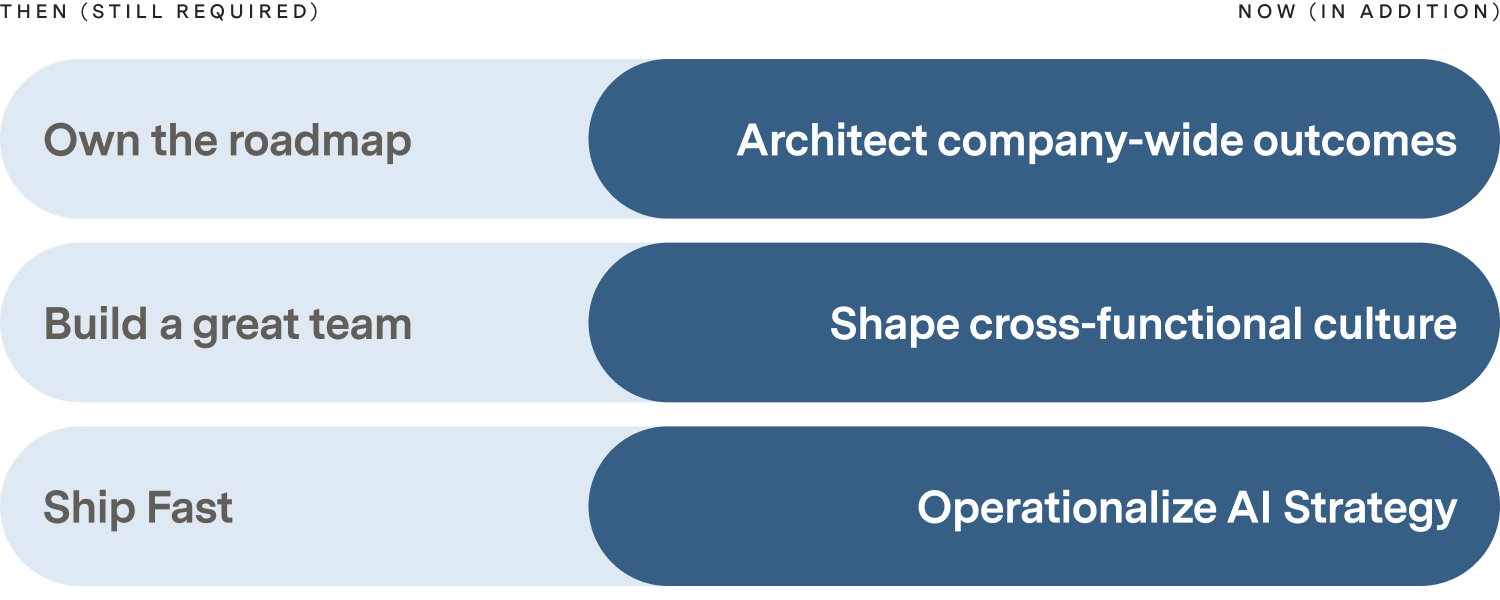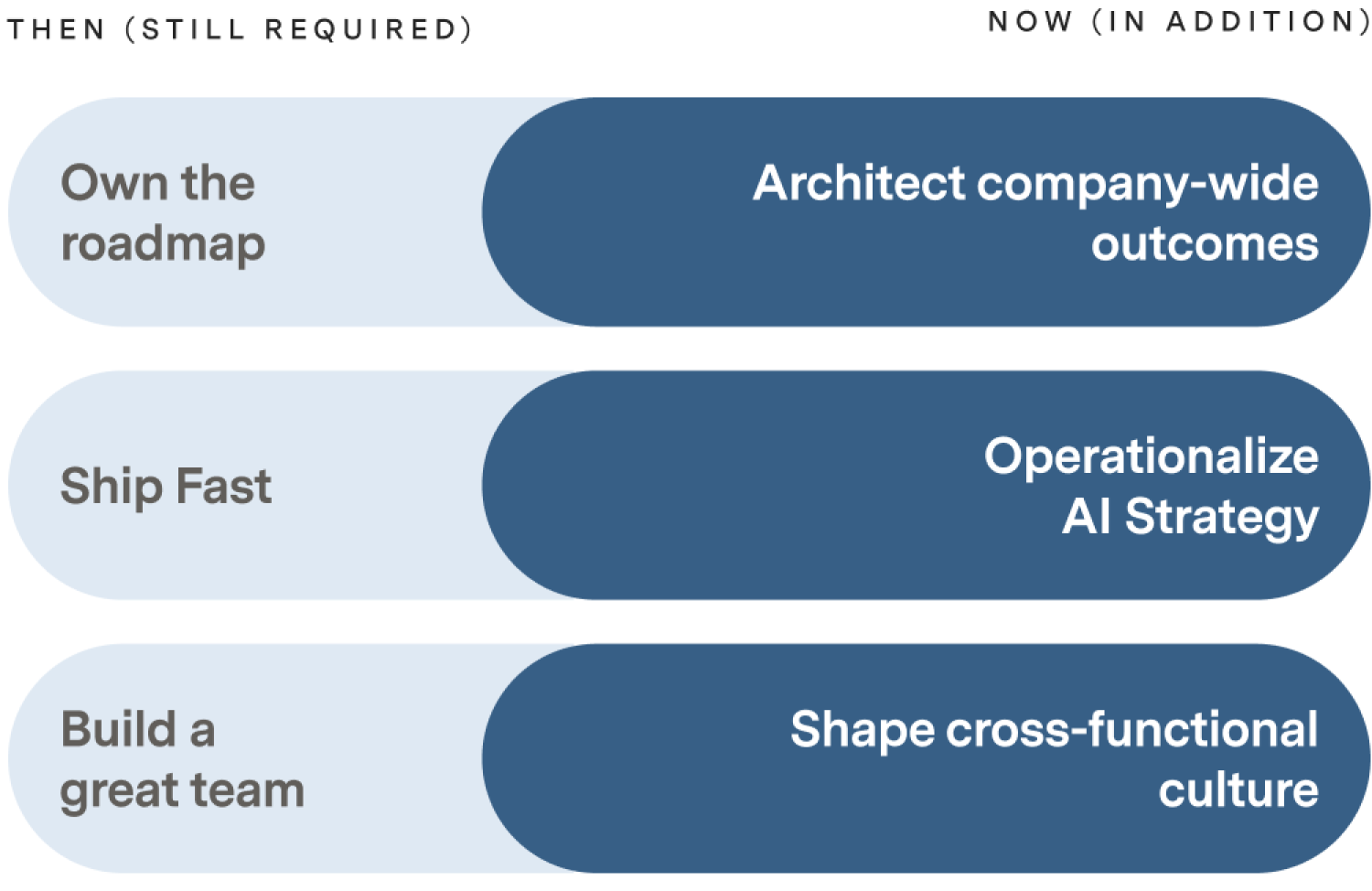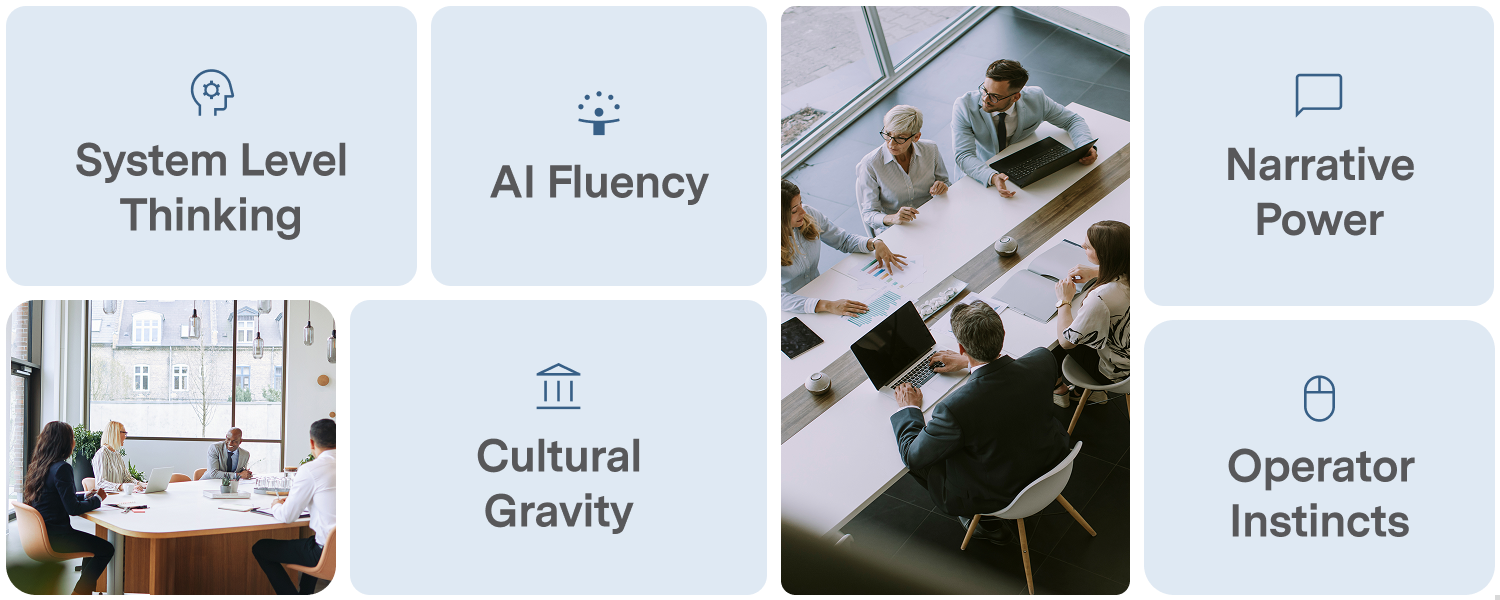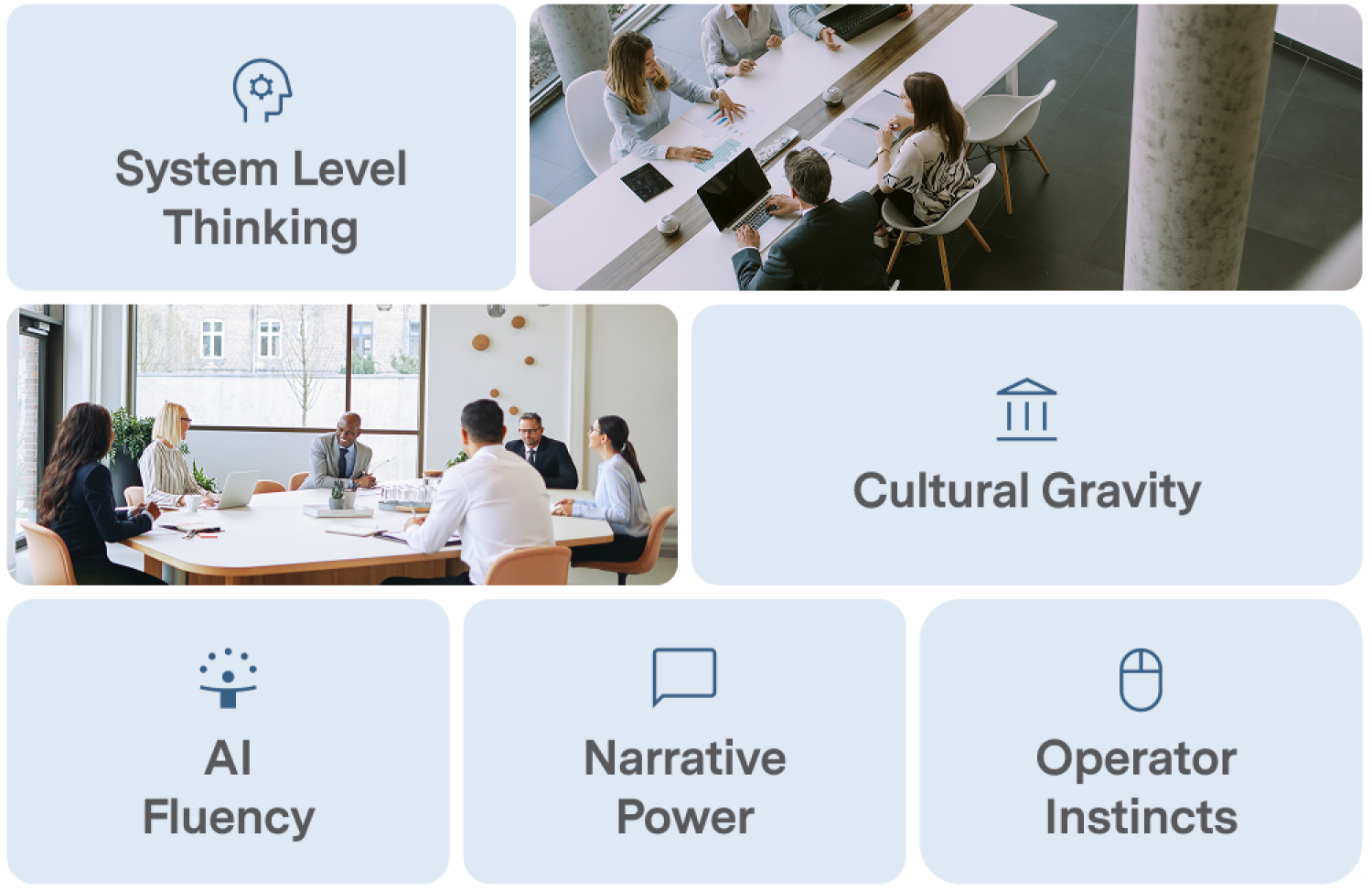A decade ago, great Chief Product Officers were defined by a clear roadmap, beautiful UX, and high-performing teams that could ship fast. They nailed agile rituals, drove velocity, and championed the customer.
Today? That’s just the starting line.
The CPO role has become one of the most complex and consequential in the executive suite. Companies expect product leaders to be technologists, operators, culture builders, AI translators, and strategic business partners—often all at once.
And yet, many organizations are still hiring based on outdated templates: promoting brilliant PMs without assessing systems thinking, AI fluency, or organizational leadership. That mismatch often leads to mis-hires—and missed opportunities.
What’s Changed for Chief Product Officers?
What’s Changed for Chief Product Officers?


The shift isn’t just in scope — it’s in altitude. Today’s best CPOs operate at the systems level, shaping not just the product, but the conditions that make great product possible.
Five Traits That Define a Great CPO Today
Five Traits That Define a Great CPO Today


1. Systems-Level Thinking
1. Systems-Level Thinking
Systems thinking isn’t new. The best product leaders have always understood how decisions ripple across teams, customers, and infrastructure. What is new is that this kind of thinking is no longer a differentiator; it’s a requirement.
Modern product environments are more complex than ever: multi-product roadmaps, global scale, fast-changing org structures, AI dependencies, and deeply entangled cross-functional work.
Today’s CPOs can’t operate in feature mode. They have to think in platforms, processes, and incentives — designing the conditions that allow great product to happen repeatedly and at scale.
Example: Atlassian didn’t just launch tools — it built a product ecosystem that enabled users and third-party developers to customize and extend workflows. That’s systems thinking in action: designing for leverage, not just delivery.
If a product leader is still defining success by “number of features shipped,” they’re not operating at the right altitude.
2. AI Fluency, Not Just Awareness
2. AI Fluency, Not Just Awareness
AI is moving faster than almost any shift we’ve seen in product history. The CPO doesn’t need to be a machine learning expert, but they do need to know how to build with AI, not just bolt it on.
That means understanding data infrastructure, collaborating with research teams, weighing ethical trade-offs, and imagining entirely new user experiences. It also means being comfortable building for capabilities that don’t yet exist — designing ahead of the curve, assuming what’s impossible today might be real tomorrow.
Product leaders who wait for the tech to stabilize will already be behind. The best CPOs are the ones asking: “What would this product look like if the AI were just slightly better than it is now?” — and then building toward that future.
Example: At Notion, the team didn’t just layer AI onto existing features — they reimagined workflows entirely, building an AI assistant that helps users generate, summarize, and refine content in real time. That required product leadership willing to design against the edge of what the models could do and iterate forward as those boundaries expanded.
3. Culture Gravity
3. Culture Gravity
Strong team culture isn’t new. What is new is how much influence the CPO now has on shaping company-wide culture, not just within the product org.
That shift is rooted in the fact that product now sits at the center of nearly every function.
In today’s companies:
- The roadmap is the business plan — determining how growth, revenue, and innovation unfold.
- GTM, AI/ML, data science, customer success, security — all depend on product strategy and execution.
- PLG, freemium, and monetization loops are increasingly co-led by product and growth teams, rather than driven solely by marketing.
- As companies scale globally and operate remotely, product orgs often define the rituals, processes, and ways of working that everyone else follows.
The result? The CPO's behavior — how they make decisions, give feedback, handle ambiguity, and navigate trade-offs — becomes a cultural blueprint for how the company operates.
They help define how cross-functional teams align, how people feel ownership, and how high standards are upheld without micromanagement. The best CPOs don’t just scale teams — they scale culture.
Example: Figma’s product culture — admired for its clarity, transparency, and user focus — was a result of intentional tone-setting from leadership, shaping how cross-functional teams collaborated and innovated at speed.
4. Narrative Power
4. Narrative Power
A strong product strategy means nothing if no one understands it. Today’s CPOs have to be master storytellers — not for marketing purposes, but for organizational clarity and alignment.
Modern product work is inherently cross-functional. Engineering, design, data, marketing, sales, and customer success all orbit product. If the CPO can’t communicate why something is being built, what trade-offs were made, and how it connects to the bigger picture, teams fragment. Priorities diverge. Momentum stalls.
Narrative isn't a soft skill. It’s a strategic one. The ability to make strategy legible and inspiring is what moves companies from alignment to action.
Example: At Coda, Shishir Mehrotra’s product storytelling helped internal and external audiences alike understand what the company was building and why. His frameworks brought coherence and buy-in. That kind of clarity turns vision into momentum.
If a CPO can’t communicate the "why," the "how" rarely lands.
5. Operator Instincts
5. Operator Instincts
Vision matters. But it doesn’t matter much without execution. The best CPOs are strategic and operational. They know how to prioritize, align, and execute — and how to build the systems that do it at scale.
This isn’t about micromanagement. It’s about judgment. Great CPOs can navigate trade-offs, adjust operating rhythms, and empower others without becoming a bottleneck. They understand how to structure teams, processes, and goals in ways that drive forward motion, not just forward talk.
Example: At Slack, product leaders had to balance rapid innovation with enterprise-grade reliability. That meant knowing how to make smart architectural decisions while still delighting users. That kind of balance isn’t just product sense — it’s operator instinct.
The modern CPO isn’t just the person with the product vision. They’re the person who can make that vision operationally real.
Implications for Hiring
Implications for Hiring
If you’re hiring a CPO today, ask yourself:
- Can they scale you as CEO?
- Do they operate fluently between product detail, AI possibility, and business strategy?
- Have they built systems — not just shipped features?
- Can they align and inspire diverse teams across the org?
And if you're considering an internal promotion:
- Do they hold trust across the executive team?
- Can they lead through ambiguity, not just execute with clarity?
- Have they had enough diversity of experience — whether across functions, product types, or markets — to truly understand what “great” looks like beyond the company’s existing norms and structures?
The CPO role has grown more demanding, more high-impact, and more central to a company’s long-term trajectory. Getting it right isn’t just about finding someone with the right experience. It’s about knowing what kind of leader your company actually needs to grow into its next chapter.
The Bottom Line
The Bottom Line
The Chief Product Officer role has transformed. It’s bigger, messier, and more impactful than it used to be.
A great CPO today isn’t just a product thinker. They’re a systems architect, cultural anchor, AI translator, narrative leader, and strategic operator.
If you’re still hiring for the job as it was five years ago, you might fill the seat — but you’ll miss the moment.





